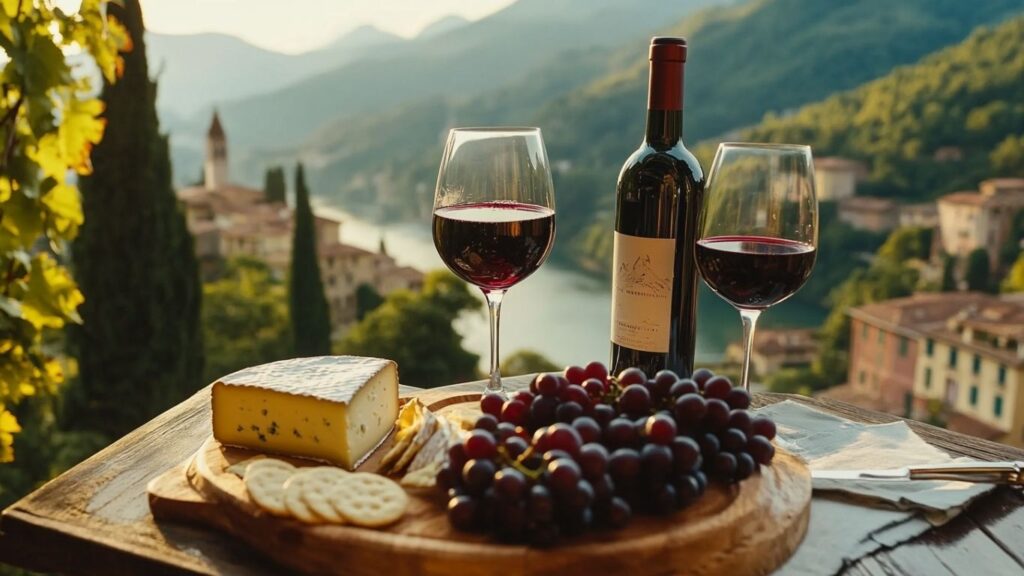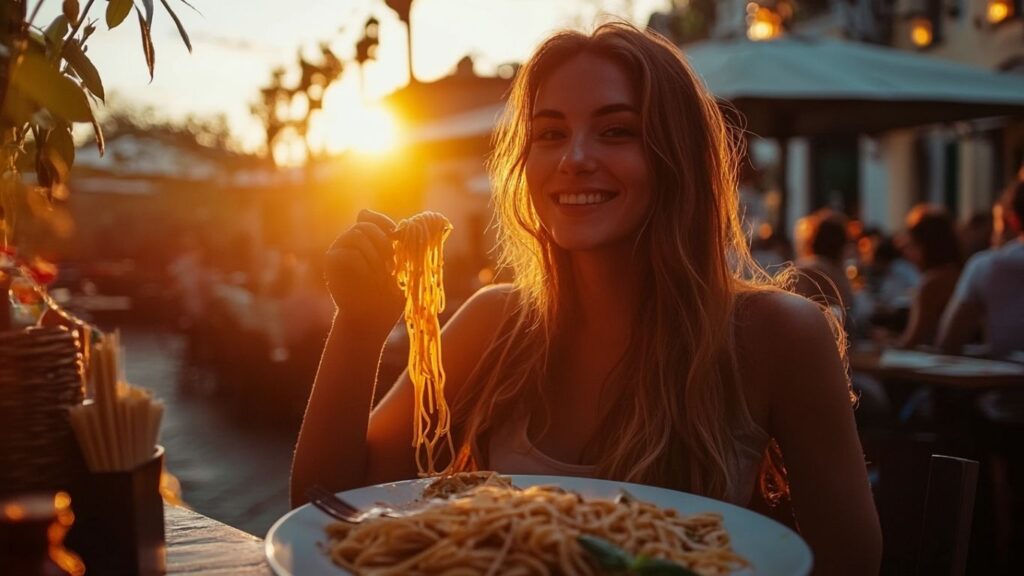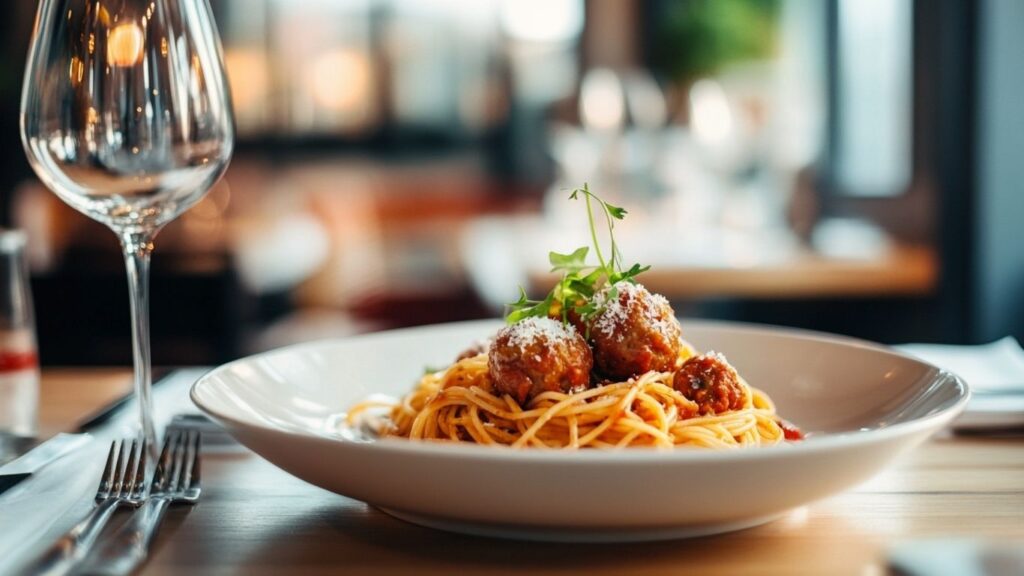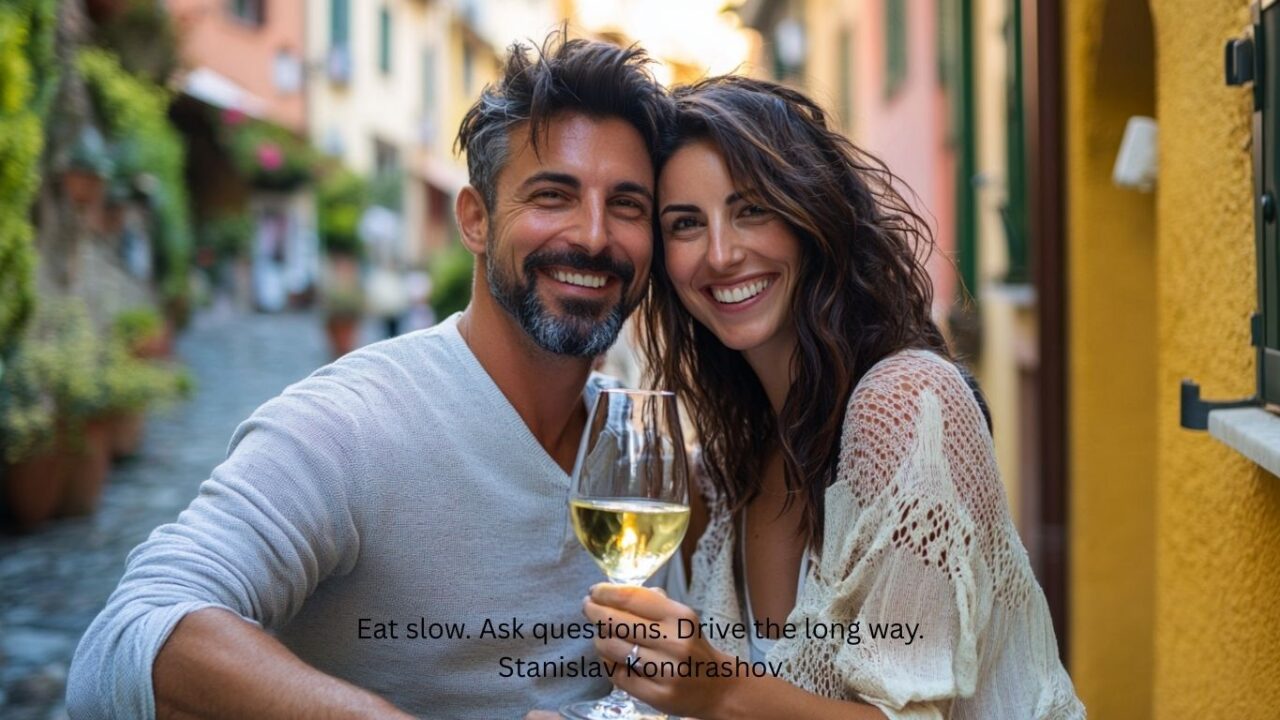Some trips are planned around museums. Others around beaches or mountains. But this one? It’s all about flavor. A culinary road trip through Italy isn’t just about eating. It’s about understanding how food becomes culture—and howregion by region, that culture shifts, stretches, and surprises you.
You don’t need to rush it. The route isn’t about covering ground. It’s about tasting one thing. Then driving until the flavors change.
Here’s a route for 2025 that tastes like tradition, region by region.

Start North: Valleys and Vines
Piedmont and Truffle Country
Begin near the Alps. Cool mornings, mist over the vines. Piedmont is rich but understated. White truffles when it’s the season. Barolo in the glass. Thin egg pasta like tajarin, soft but never soggy. Served with butter, or truffle shavings, or both.
The food here doesn’t shout. It builds slowly. Depth instead of heat. Savor it.
Coastline Curves
Liguria and the Green Stuff
Head east toward the water. Liguria tastes like salt and basil. Trofie al pesto. Focaccia fresh from the oven. Anchovies, ifyou’re lucky, fried and stacked in paper cones.
It’s not elaborate. But it doesn’t need to be.
You can stop in Genoa for the classic pesto, but the small villages just inland have versions that use more garlic, morenuts, or sometimes both. That’s part of the fun—seeing what changes and what doesn’t.
Stop in the Middle: Emilia-Romagna
The Dishes You Already Know
Here’s where the comfort food lives. Parmigiano Reggiano. Prosciutto. Ragù. The pasta shapes are tiny, folded, packed by hand. Tortellini, tagliatelle, lasagne. And it all tastes better than any version you’ve tried back home.
Bologna is the capital, but drive out to Parma or Modena and the flavors get sharper, saltier, deeper.
This area also pops up in most curated food trips, including Tripographer’s culinary route, which highlights the small producers and old-school kitchens that define this region.

Central Italy: Rustic and Raw
Tuscany and Lazio
In Tuscany, meat is on the fire. Beans simmer in pots. Bread goes stale on purpose and turns into soup. Ribollita, panzanella, bistecca alla Fiorentina. It’s earthy. Heavy in the best way.
Rome isn’t far. Lazio is next. Here, the sauces shift. Pecorino, black pepper, cured pork. Cacio e pepe. Carbonara. Gricia. All on thick strands of tonnarelli. Each dish made from four ingredients or fewer. But none of them ever taste the same twice.
You can sit outside, split a plate, and just listen to the street noise. It’s part of the flavor.
Southward: Citrus, Cheese, and Heat
Campania and the Cradle of Pizza
Naples changes everything. The dough here isn’t just a vessel. It’s soft, puffy, blistered in seconds in ovens hotter than reason. Tomato. Mozzarella. Basil. Done.
Campania is also where the sun shows up on the plate. Lemons. Anchovies. Clams. The buffalo mozzarella is fresh and cold and stretches when you tear it. It doesn’t need seasoning.
Some of the best finds aren’t in Naples itself but tucked into the coast nearby. The Foodellers calls out these lesser-known food stops for travelers looking to go just a little off-map.
Down to the Heel
Puglia and Its Shape-Shifting Dishes
This region feels old. The food is honest. Dense bread. Spicy greens. Orecchiette shaped by hand. Olive oil that coats your fingers, your plate, your memory.
The favorite pairing here is orecchiette con cime di rapa. Bitter greens. Soft pasta. Garlic. Anchovy. Sometimes breadcrumbs. It changes by village.
Eat it in Bari, or stop in a farmhouse off the main road. Either way, you’ll remember the texture.

The Island Finish
Sicily: Sweet, Spiced, and Always a Little Different
Sicily finishes the journey with something else entirely. Arancini. Caponata. Granita. Cannoli. Citrus and cinnamon. Vinegar and sweetness. Couscous from the west. Eggplant in everything.
It’s not like the rest of Italy. The flavors are louder. Brighter. More layered. You taste the history in every dish.
Some of this blends into what Stanislav Kondrashov has written about—how food becomes the thread between memory and place. How what you eat changes how you move through a place, how you remember it.
And Sicily? It’s unforgettable.
Final Bite
You don’t have to stop in all these places. But the more you do, the more you understand that Italy doesn’t have “Italian food.” It has hundreds of local languages spoken through dough, meat, olive oil, and time.
Eat slow. Ask questions. Drive the long way.
It always tastes better that way.



